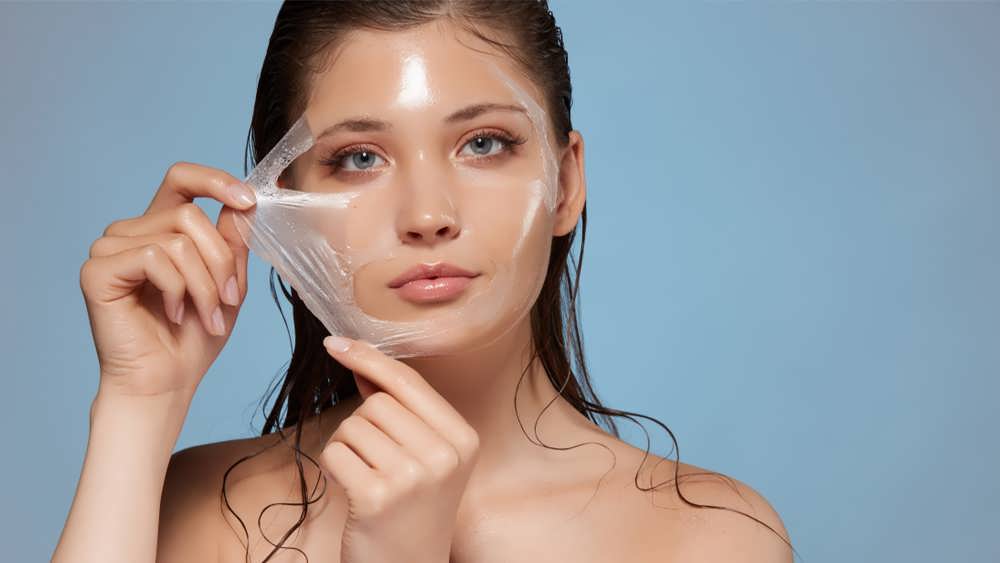Exfoliation is the process of removing dead skin cells from the surface of the skin using a chemical, scrub or exfoliator. Your skin naturally exfoliates almost every month and undergoes cell regeneration.
Sometimes dead skin cells do not completely disappear from the skin. This can lead to dry spots, flaking of the skin and clogging of the pores. Peeling however, can help prevent this.
Generally, there are two methods of exfoliation; physical and chemical.
What is physical exfoliation?
Physical exfoliation is the oldest method of exfoliation. There are many ways to physically exfoliate. You can apply a towel or scrub in a circular motion on your face to remove layers from your skin. The good thing about physical exfoliation is the simplicity of doing it. Remember that our goal in exfoliation is not to make our lips flower or our skin turn red. Redness or irritation of the skin following home peeling can be caused skin damage, so you do not need to peel your skin! Gentle circular motions on the face are adequately effective.
What is chemical exfoliation?
Chemical peels usually use weak acids, retinol, and enzymes to exfoliate the skin. These methods, like physical exfoliation, can be applied in both home and clinical forms. For chemical peels at home, you can use the chemical peels available in the market or browse the Internet and learn how to make a chemical peel with materials in the kitchen. In general, household chemical peels (if used properly) are much more effective than physical home peels. Chemical peels, like physical methods, must be done with caution; Because there is a risk of damage to the skin.

The difference between home and clinical exfoliation:
The main difference between these two peeling methods is their effectiveness. For example, you can do exfoliation with home kits, but the results of clinical exfoliation are much stronger.
In the case of chemical peels, household products are usually less acidic. Therefore, they have fewer exfoliating effects. In addition, skin problems are carefully examined in the clinic to identify the most suitable acid for the treatment. Afterward, while using the acids, other ingredients are applied to your skin so that exfoliation becomes more effective and its side effects are reduced.
The benefits of clinical exfoliations
There are many cones in clinical exfoliation compared to home care, let’s point out some:
1- Improving skin color and texture
Whether you have a dry face or a blemished complexion, exfoliating your skin can help. Removing old skin cells and allowing new cells to penetrate will give your skin a new lease of life. Exfoliating the skin improves the texture and color of the skin and gives it a soft and supple appearance like baby skin.

2- Deep cleansing of skin pores
When you exfoliate, you effectively save your skin pores from clogging. Removing dead skin and dryness left by cleansing the skin prevents clogging of the pores. Exfoliation is great for caring for acne-prone skin; By exfoliating, not only you will enjoy absorbing more of your skin care products, but you will also feel softer and less prone to blemishes.
3- Prevention of acne
Acne is the most common skin problem we are always battling! Excess sebum, genetics, hormonal imbalances and acne-causing bacteria are some of the reasons that lead to acne on the skin. Exfoliating and cleansing the pores of the skin not only prevents whiteheads and blackheads but also prevents acne. If you have acne prone skin, it is important to include exfoliation in your skin care routine.
4- Shiny skin
Although you cannot go back, you can regain the radiance of your skin without traveling to your youth! Exfoliating your skin by actively improving skin cells will give you brighter, clearer, younger looking skin. Be proud of your radiant and shiny skin with regular exfoliation.
5- Increasing blood circulation
Regular peeling of the skin throughout the year is beneficial, especially in winter. Cold and hot weather can dry out your skin. Exfoliating the skin helps stimulate blood flow and gives you beautiful, rosy skin. Improving blood flow means improving collagen production in the skin, which promises to prevent sagging and aging skin.


